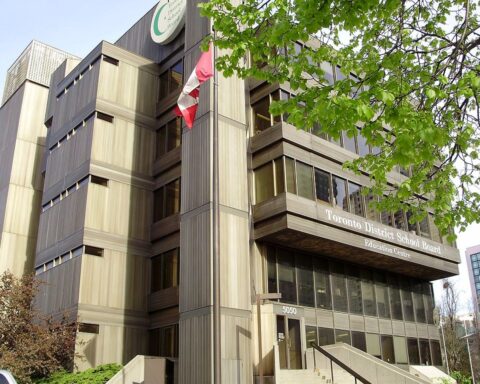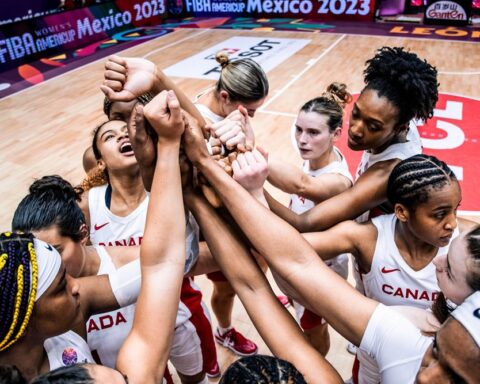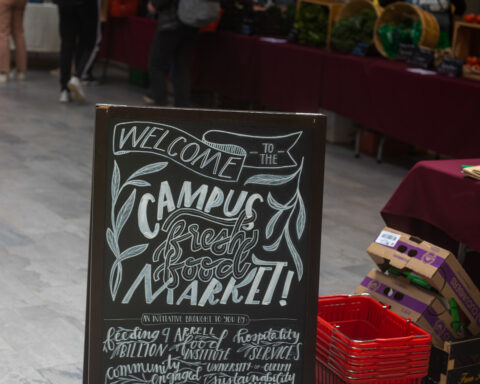When I surveyed Canadian newspaper newsrooms in 2004, asking who worked there by race and gender, more than half of them refused to tell me. One managing editor scrawled on the questionnaire: “Frankly, I find these questions insulting.”
That surprised me, especially since my survey was endorsed by what was then the Canadian Association of Newspaper Editors, whose mission was to uphold journalistic standards like accountability, and to fight for press freedom. That organization never carried out what I recommended — an annual survey of newsrooms to measure racial diversity.
My survey of 2,119 journalists working at 37 papers showed that the typical Canadian newspaper in 2004 was staffed by journalists who were almost as white as the paper they were printed on. And no one appeared to be concerned about that.
Until this week, I was the last researcher to provide a picture of how diverse (or non-diverse) the people who write and produce the news for Canadians actually are. In 2004, non-whites made up only 3.4 per cent of newspaper staffs — far short of the 16.7 percent of the populations they served.
Besides being more than six times under-represented industry-wide, minorities were entirely absent from 22 of the 37 newsrooms. Fifty-nine per cent of newspapers, in other words, employed only white journalists. These numbers were worse than a similar survey I did in 1994, and hiring editors admitted their commitment to diverse newsrooms had dropped in those 10 years.
So, imagine how gratified I was to learn that, 17 years later, another newsroom diversity survey was in the works. This was mounted not by an industry association but by the Canadian Association of Journalists (CAJ), a volunteer organization of individual journalists. To its credit, NewsMedia Canada — representing print, broadcast and online news organizations — endorsed the CAJ survey.
Guess what? Little seems to have changed.
Very white
Nothing should take away from the fact that the CAJ has performed a valuable and selfless public service, giving Canadians free access to the demographics of the people who cover us in our communities. You can check it out here.
Sadly, it’s not a very representative picture since a majority of newsrooms — including the most popular broadcaster and most of the largest newspapers — either refused to participate or turned in statistics that the CAJ deemed unreliable or could not categorize. Amazingly, CBC News and the Postmedia newspaper empire said they did not know the racial identities of 965 journalists in their employ. They were simply listed as “Unknown.”
What the CAJ did measure were 3,873 news people at 209 media outlets, making it the largest-ever survey of the demographics of television and radio broadcasters, online news operations, and daily and community newspapers.
“The data we’ve currently collected does make certain things clear,” the CAJ survey says. “For one, the typical Canadian newsroom is not representative of the Canadian population.” Among the findings:
- Almost half of the newsrooms surveyed employ only white journalists.
- Industry-wide, of the journalists whose race data is known, 74.9 per cent identify as white compared to 18.6 per cent who identify as a visible minority, and 6.4 per cent who identify as Indigenous. While on the surface this compares favourably to the latest population data, most of the diversity is concentrated in a few larger newsrooms, and 400 newsrooms did not fill out the survey at all.
- Newsroom managers tend to overestimate the diversity of their newsrooms. Seventy per cent of respondents indicated that their newsroom is somewhat or very representative of its audience. In fact, when compared to the latest census, less than a third actually were.
- Some newsrooms are wildly at odds with the diversity in their communities. Managers at Metroland’s community newspapers (serving the Greater Toronto Area) reported that 93.3 per cent of its journalists are white. But only 48.3 per cent of Torontonians identify as such.
- Ninety per cent of newsrooms across Canada have no Latin, Middle Eastern or Mixed Race journalists on staff. Eight in 10 newsrooms have no Black or Indigenous journalists.
- A large majority of the 638 news outlets surveyed either refused to participate or were unable to provide information that fit. Only 147 of those questionnaires were returned, representing 209 newsrooms. Fifteen others refused to participate, and 379 simply did not reply.
- On the hopeful side, women outnumbered men overall in the newsrooms — the first time that has been recorded in Canada (52.7 per cent women compared to 46.7 per cent men and 0.7 per cent who identify as non-binary).
- According to the CAJ, many newsrooms said this was the first time they had surveyed their staffs about racial identities. That is ironic, since many news outlets have done stories pointing out diversity gaps in businesses and governments they cover.
Clearly, Canadian newsrooms are very far from ‘getting it’ about representing the diversity of their local populations. Let’s hope they step up their game in next year’s CAJ survey and honour the journalistic core value of accountability.
“The truth is,” the CAJ’s report states, “Canada is late in collecting data on race and gender in our newsrooms — data which has been collected in the United States since 1978.”
No cooperation
It’s also significant — and shameful — that some of the largest news organizations did not participate in the survey. CTV, Canada’s most popular television network, refused — not giving a reason — and Postmedia, despite being asked to provide data for each of the 120 newspapers it owns, decided instead to give company-wide figures, meaning readers were left in the dark about how reflective journalists are of the populations of some of the most diverse cities in the country. No data was available for papers like the Vancouver Sun, Montreal Gazette, Calgary Herald, Ottawa Citizen or Toronto Sun.
Without more co-operation from newsrooms, the CAJ said it is in no position to answer questions like “Are Canadian newsrooms becoming more or less representative of the populations they serve? Are some newsrooms improving? Are others regressing?”
These are questions that we should be addressing now. Who’s being left out of the Canadian conversation? Does it matter that Indigenous and non-white journalists are not present to offer their perspective on important stories involving race and the increasing multiculturalism of Canada.
We also need to ask why some news organizations do not think it’s in their interest to have newsrooms that look and sound like the communities they serve. The CAJ pulls no punches in identifying which ones. In Metroland’s Peel Division, which serves cities like Brampton, white journalists outnumber whites in the population by 72 per cent to 38, while Asians are underrepresented by 9 per cent to 44.6.
Other news outlets keep unreliable statistics on who they employ. Example: The Toronto Star, Canada’s largest newspaper, serves a region where people identify as a rainbow of different racial identities. White people years ago became a minority in the GTA. The paper has undertaken several diversity initiatives over the years, yet it still does not collect accurate numbers to show how many journalists it employs who belong to those groups. It only collects ranges — and responded to the CAJ survey by saying that it estimates its newsroom has only between one and four journalists who are either Middle Eastern, Black or Latin.
We also need to ask why Indigenous and visible minority journalists only find work in a handful of newsrooms. For example, 40 per cent of all Middle Eastern journalists, 47.3 per cent of all Black journalists and 50 per cent of all Latin journalists surveyed work at the CBC. Eighty-four per cent of newsrooms employ no Indigenous journalists.
Out of touch
For those looking to make the media industry more diverse, there is at least one reason for optimism. Newsrooms with more diverse leadership tend to have more diverse workforces. At the present time, however, more than 80 per cent of supervisory roles are held by white journalists.
In the conclusion of Who’s Telling the News, my 2004 survey of newspaper newsrooms, I wrote: “Most troubling is the lower commitment editors in all papers seem to have to hiring diversity now, as compared to 10 years before. As newspaper circulation declines, as newspaper staffs fall further out of touch with the demographics of the population, and as news about immigration, religion, anti-terrorism issues, and racial profiling proliferate, one would expect editors to put a higher premium than ever before on making their news gatherers more diverse. But the opposite attitude is reflected in this survey, and we do not know why.”
I’m afraid we still don’t.
(Disclosure: I am credited in the CAJ survey report as contributing advice on methodology.)
John is emeritus professor and former chair of the Ryerson School of Journalism. This followed a 20-year career as news executive with the Toronto Star. One of Canada’s leading researchers and trainers dealing with diversity in news organizations, he did the first census of Canadian daily newsrooms and his analysis of media coverage of the Ipperwash confrontation was cited in Mr. Justice Sidney Linden’s provincial inquiry report.





